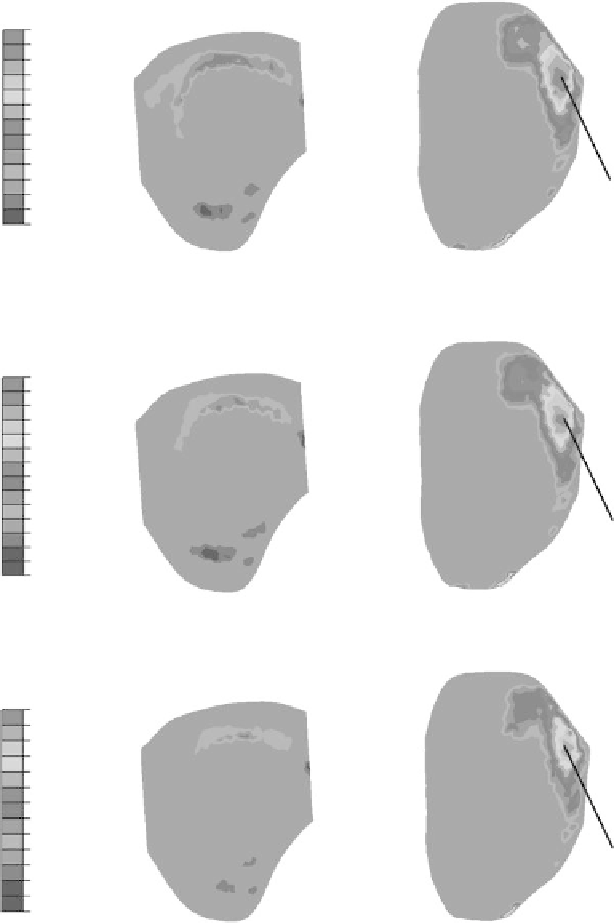Biomedical Engineering Reference
In-Depth Information
MPa
0.497
0.428
0.384
0.339
0.295
0.250
0.206
0.162
0.117
0.073
0.028
-0.016
-0.060
-0.105
Peak
0.497 MPa
(a)
MPa
0.432
0.428
0.384
0.339
0.295
0.250
0.206
0.162
0.117
0.073
0.028
-0.016
-0.061
-0.105
-0.152
Peak
0.432 MPa
(b)
MPa
0.428
0.384
0.340
0.295
0.251
0.206
0.162
0.117
0.073
0.028
-0.016
-0.061
-0.105
-0.131
Peak
0.428 MPa
(c)
FIgure 12.6
(See color insert.)
Lateral-medial shear stress on the tibial plateau with (a) 0-, (b) 5-, and
(c) 10-degree laterally wedged orthoses.
that a laterally wedged orthosis decreased the tibiofemoral shear stress in the medial direction indi-
cated the effectiveness of this intervention.
The predicted minimal principal strain, contact pressure, and lateral-medial shear stresses in the
tibiofemoral articulation during mid-stance were all revealed to be higher at the medial compart-
ment (Figures 12.4, 12.5, and 12.6). This phenomenon was consistent with other FE studies (Shim
et al., 2009; Yang et al., 2010) which also predicted the dominance of the medial component in
the knee joint during mid-stance. The laterally wedged orthoses were predicted to release some of
the loading on the medial joint, which proves the effectiveness of the orthosis. It should be noted
that this FE model was based on a single subject, making it difficult to draw any general conclu-
sions. Our FE simulation demonstrated the immediate effect of the laterally wedged insoles. The

Search WWH ::

Custom Search